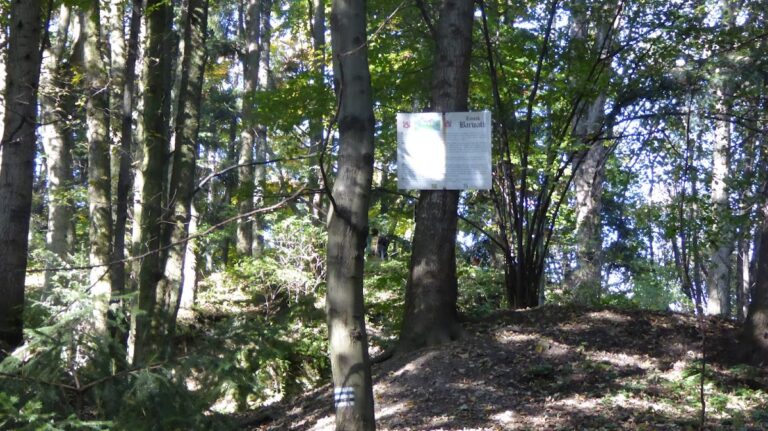Żupny Castle: Medieval Saltworks Fortress in Wieliczka, Poland
Visitor Information
Google Rating: 4.5
Popularity: Low
Google Maps: View on Google Maps
Official Website: muzeum.wieliczka.pl
Country: Poland
Civilization: Unclassified
Remains: Military
History
Żupny Castle is located in Wieliczka, Poland, and was constructed by the medieval Polish civilization in the mid-13th century. Its primary purpose was to protect and oversee one of the world’s oldest salt mines, first documented in 1248, which played a key role in the local and royal economy.
During the Middle Ages, the castle became the administrative heart of the Kraków Saltworks, responsible for managing salt extraction and trade. In 1368, King Casimir III the Great reinforced the importance of the salt industry by issuing a decree to regulate mining and sales. This regulation underscored how significant salt production was to the kingdom’s finances, as salt taxes supplied up to one third of the state treasury income from the 14th through the 16th centuries. The revenues generated from salt supported the construction of major landmarks, including the royal Wawel Castle and university buildings in Kraków.
Control of the mines was entrusted to a count known as the Salzgraf, who resided at the castle. Over several centuries, the castle complex experienced successive expansions and renovations up to the 18th century. At the height of salt mining activities, about 2,000 miners worked underground, producing over 30,000 tons of salt annually, reflecting the industrial scale supported by the castle’s administration.
In the 20th century, following Poland’s regaining of independence in 1918, the salt mines and castle were nationalized. The state placed the salt trade under direct control by 1932. However, during World War II, in 1945, the castle and mines sustained damage from bombing. Despite the destruction, salt extraction continued to be a significant economic activity locally between 1968 and 1988.
The castle underwent restoration that was completed in 1992. It was transformed into the Museum of Kraków Saltworks, housing archaeological and historical exhibitions that reflect its rich past. Recognition of its cultural and historical value led to its designation as a historic monument in 1988. Later, in 2013, the Wieliczka and Bochnia salt mines, including the Żupny Castle complex, were added to the UNESCO World Heritage List, ensuring preservation and acknowledgment of their global importance.
Remains
The Żupny Castle complex consists of an arrangement of three principal buildings and a defensive tower, reflecting architectural developments spanning from the 13th to the 19th centuries. The overall layout forms an enclosed area, originally surrounded by 13th-century sandstone walls built during the reign of King Casimir the Great, which created an oval-shaped fortress.
The oldest structure, known as the Middle Castle, dates back to the 13th and 14th centuries. It served ceremonial and administrative purposes, containing important chambers such as the Grodzka Chamber—originally a court meeting hall now called the Gothic Hall—and the Royal Chamber, where Polish monarchs stayed during visits from the 14th to the 17th centuries. This building also housed spaces dedicated to salt sales and storage for valuables associated with the saltworks. Today, it holds permanent archaeological and historical exhibitions, including Poland’s largest collection of salt shakers, along with temporary displays.
To the north lies the North Castle, constructed in the 14th and 15th centuries. This section provided living quarters for officials and featured the Chapel of St. Stanislaus on its upper floor from the 16th to the late 17th century. Its ground floor contained a prison known as Groch, a lard storage room used to supply lighting for the mines, and areas for storing mining tools, silver, and chapel furnishings. A wooden hall once connected the North and Middle Castles on the second floor until 1780, facilitating communication and ceremonial functions. The walls of this hall were decorated with portraits of 24 successive saltworks administrators, called żupniks. In the mid-19th century, a wooden gallery was added along the North Castle’s façade. Today, this building hosts the museum’s administrative offices, scientific workshops, archives, a specialized library devoted to mining literature, and a café.
The South Castle, built during the mid-19th century, originally contained administrative offices, quarters for guards, a carriage house, and storage for fire-fighting equipment. Presently, it is used for temporary exhibitions, educational workshops, and includes a restaurant.
Within the castle complex are the remains of the Żupna kitchen from the 15th century, recognized as the first public catering establishment in Poland. This kitchen provided free meals to saltworks administrators, miners, and traders until the late 16th century, reflecting early social support for those involved in the salt industry.
Enclosing the castle is a defensive wall system constructed from Beskid sandstone, notable for its oval shape and dating from the 13th century. This fortification once included 19 towers and two primary gates: the Kraków Gate to the north and the Kłosów Gate to the south. A surviving 14th-century defensive tower measures approximately 16 by 10 meters and historically contained a prison for serious offenders as well as living quarters for a chaplain. This tower remains a prominent feature of the complex.
Additionally, the castle grounds contain an 18th-century garden, which has served as a space for relaxation and social gatherings for residents and visitors, maintaining continuity with the site’s historic legacy.










